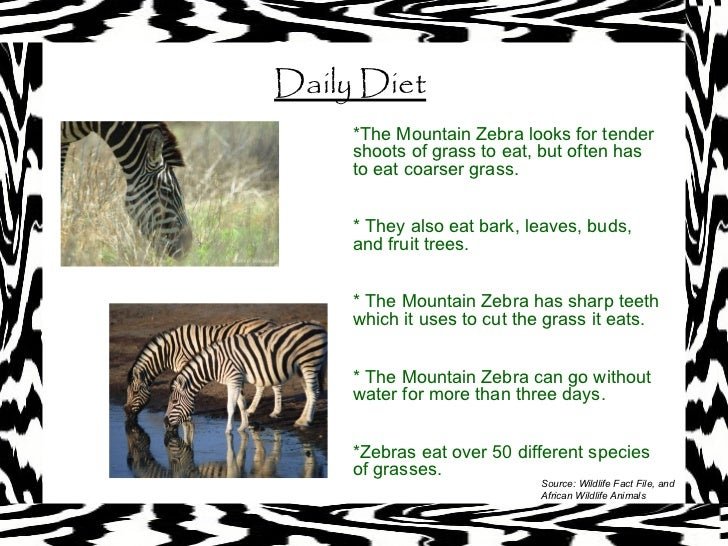
Mountain zebras, primarily found in the rugged terrain of southern Africa, possess unique adaptations that help them navigate their challenging habitats. Their ability to forage effectively while staying alert to potential threats is key to their survival. So, grab your coffee, sit back, and let’s explore the diet and hunting strategies of the mountain zebra.
Understanding the Mountain Zebra’s Habitat
Before we dive into the diet and strategies of the mountain zebra, it’s essential to understand where they live. Mountain zebras are mostly found in mountainous or hilly areas within Namibia, South Africa, and Botswana. Their natural habitat is a mix of grasslands and rocky outcrops, which gives them a unique vantage point against predators.
These zebras prefer areas with sparse vegetation, where they can graze on the grasses while having a clear view of their surroundings. In fact, their **stripes** serve a dual purpose—not only are they visually striking, but they also help break up their outline in the tall grasses, making it harder for predators to spot them. Honestly, it’s like nature’s own camouflage!
The Mountain Zebra’s Diet: What Do They Eat?
You might be surprised to learn that mountain zebras are strict herbivores, primarily munching on grasses. But it’s not just any grass they’re after. Mountain zebras often look for fresh, tender shoots and leaves that spring up after the rains. This is vital because during dry seasons, their food supply can dwindle significantly.
Here’s what makes their diet interesting:
- Selective Grazers: Mountain zebras are quite picky eaters. They often choose the most nutritious grasses first, which helps them maintain their health and energy levels.
- Fruits and Flowers: Occasionally, they nibble on fruits and flowers if they come across them. This adds a little variety to their diet while providing essential vitamins.
- Water Sources: Staying hydrated is crucial, especially in dry regions. Mountain zebras can travel several miles to find waterholes and are known to drink frequently when possible.
What’s remarkable is how these zebras adapt to their environment. When grass cover is short, they may even dig through dirt to find roots or tubers. You might be wondering how they manage to find food in such challenging conditions: well, they have excellent memories and can remember where food sources are located.
Hunting Strategies: How Mountain Zebras Avoid Predators
While mountain zebras are herbivores and don’t hunt for food, they do employ a range of strategies to avoid becoming prey themselves. Predators like lions, hyenas, and leopards are always lurking nearby, and the zebras must stay one step ahead.
Their hunting strategy relies heavily on their instincts and social structure. Here’s how they do it:
- Herd Behavior: Mountain zebras often travel in groups. This social structure helps them keep watch for predators, as there are more eyes scanning the environment.
- Heightened Senses: They have fantastic hearing and eyesight, which allows them to detect potential threats from afar.
- Fast and Agile: If danger strikes, mountain zebras can sprint at impressive speeds, reaching up to 40 mph when fleeing from predators.
The zebras’ unique stripes also play a significant role in predator evasion. The pattern of their stripes can confuse predators, especially when the zebras are running together in a herd. It’s like a moving optical illusion!
Social Structure and Its Role in Survival
The social aspect of mountain zebras is vital—not just for companionship but also for survival. Within herds, there’s often a dominant male who leads the group. The others follow, forming a tight-knit community that supports one another.
Here’s how social structure benefits mountain zebras:
- Protection in Numbers: A larger group can deter predators more effectively than a lone zebra. There’s safety in numbers, and they can collectively respond to threats.
- Communal Grooming: Grooming helps strengthen social bonds and keeps their coats free from parasites.
- Teaching the Young: Older zebras teach the younger ones crucial survival skills, from finding food to recognizing predators.
When you observe a herd of mountain zebras, you can see how they interact—nibbling on grass together and watching for danger. It’s a delicate balance between feeding and staying safe, and this social cooperation is at the heart of their survival strategy.
Adapting to Seasonal Changes
Seasonal changes can dramatically affect the diet and behavior of mountain zebras. During the wet season, when grass is abundant, they’ll tend to stay in areas with richer vegetation. But as the dry season sets in, they might have to migrate to find new food sources and waterholes.
Migration can be a risky venture. The zebras have to navigate through the territories of other predators, but their instincts and group behavior help them stay safe. It’s like seasonal road trips but with the constant threat of being chased.
During these migrations, their sheer adaptability shines. They can identify new grazing locations and adjust their social structure as needed. If you think about it, this ability to pivot based on the environment is what makes them truly resilient.
The diet and hunting strategies of the mountain zebra illustrate nature’s intricate balance of survival. These zebras have adapted beautifully to their environment, making them captivating creatures. From their selective grazing habits to their strong social structures, mountain zebras show us how community and clever strategies are key to thriving in the wild.
Understanding their behaviors and dietary needs not only sheds light on their lives but also emphasizes the importance of conservation efforts. After all, keeping their habitats safe ensures that these black-and-white beauties continue to roam the landscapes of southern Africa for generations to come. So, the next time you see a zebra, remember there’s a lot more than meets the eye.

